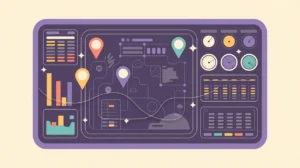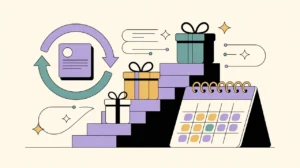What Does Fundraising Cultivation Involve?
Fundraising cultivation is the process of building and deepening relationships with donor prospects before an ask is made. It bridges the gap between identification and solicitation, ensuring donors feel informed, valued, and aligned with the mission. Cultivation focuses on trust-building. It creates touchpoints that demonstrate credibility, transparency, and shared values.
In practice, cultivation includes activities such as tailored communications, behind-the-scenes updates, site visits, events, and one-on-one briefings. It requires fundraisers to listen actively to donor interests and align opportunities with what matters most to them. Cultivation is not about transactional updates but about fostering meaningful connections that lay the groundwork for sustained giving.
Organizations that skip cultivation risk making cold, ineffective asks. Without trust and alignment, solicitations can feel opportunistic and erode credibility. By contrast, strong cultivation creates momentum: donors enter the solicitation stage already believing in the mission, ready to engage, and confident in the organization’s ability to deliver impact.
What Competencies are Associated with this Role?
Cultivation requires relational skill and strategic follow-through. Competencies include:
- Designing donor cultivation plans and timelines
- Tailoring communications to donor priorities
- Coordinating donor touchpoints across staff and board members
- Organizing site visits, briefings, and special events
- Listening actively to donor interests and concerns
- Aligning program opportunities with donor motivations
- Documenting cultivation activities in CRM systems
- Tracking donor engagement metrics
- Ensuring consistent branding and messaging in all interactions
- Building trust through transparency and responsiveness
How Might AI and Automation Help this Role?
AI and automation can help personalize cultivation while reducing manual tasks. Opportunities include:
- Automated reminders for donor touchpoints
- AI-driven personalization of emails and communications
- Predictive analytics to suggest next-best cultivation actions
- Sentiment analysis of donor communications for interest tracking
- Automated scheduling for visits and events
- CRM-integrated AI to track engagement and recommend adjustments
- Generative AI for drafting tailored briefings or thank-you notes
- Dashboards summarizing donor engagement journeys
What are the Roles by Experience Level?
Cultivation responsibilities vary but generally align with:
- Entry: Development Assistant, Donor Relations Associate – manage logistics, update CRM, coordinate event invites
- Mid: Development Officer, Donor Engagement Specialist – plan cultivation activities, tailor communications, track engagement
- Senior: Development Manager, Cultivation Lead – design cultivation strategies, oversee portfolios, manage high-touch donors
- Executive: Director of Development, Chief Development Officer – set cultivation priorities, involve board members, steward top-tier relationships
How Transferable are the Skills from this Role?
Cultivation skills transfer across any field that requires relationship-building and stakeholder management. Within nonprofits, they lead naturally into major gifts, stewardship, and executive development leadership. Beyond nonprofits, cultivation parallels account management, client success, and stakeholder engagement in the private sector. The ability to listen, align, and build trust is universally valuable. Mastering cultivation strengthens both interpersonal and strategic communication skills, positioning professionals to excel in roles where influence and long-term relationship management are essential.







